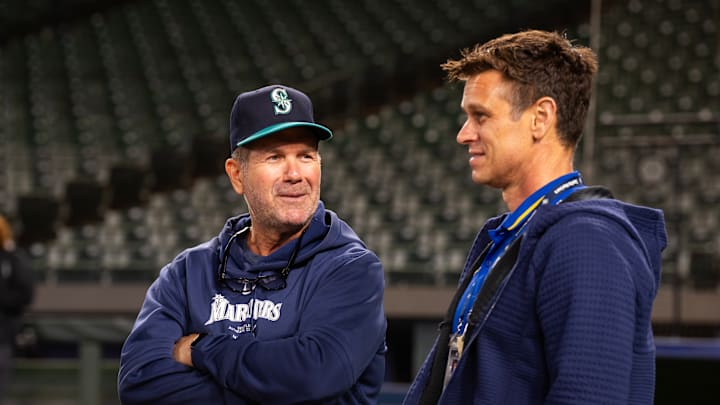Payroll, payroll, payroll. It's a constant point of contention for baseball fans, since MLB is the only major American sports league with no salary cap, meaning teams could theoretically spend as much as they want. It's a big reason why teams like the Mets and Yankees can allocate upwards of $300 million to their roster, while the lowly Athletics had a combined payroll of just $63 million in 2024. It's especially touchy for fans of the Mariners, since ownership has typically spent right around the league-average, which hasn't been enough to field a postseason-worthy roster.
After years of mediocrity, it may be time for the spending limitations to change in Seattle. To many fans, it's a foregone conclusion that increasing spending will result in a better roster overall.
As of now, the Mariners' total confirmed payroll for 2025 sits at a little over $108 million. Here are all of the non-arbitration salaries, as they stand:
Player | Payroll Salary |
|---|---|
Luis Castillo | $24,150,000 |
Julio Rodríguez | $19,912,500 |
Mitch Haniger (player option) | $17,500,000 |
Mitch Garver | $12,500,000 |
Jorge Polanco (club option) | $12,000,000 |
J.P. Crawford | $11,000,000 |
Victor Robles | $4,125,000 |
Dylan Moore | $3,908,334 |
Andrés Muñoz | $3,437,500 |
Mariners Payroll for 2025: Complete List of Current Commitments
The top six contracts alone total $97,000,000, which would be nearly two-thirds of 2024's total payroll. There is some flexibility, as Polanco's club option will likely be waived, freeing up $12 million. Haniger will undoubtedly exercise his player option after a disappointing season, putting the team on the hook for a whopping $17.5 million, but Seattle could find a way to dump his contract onto another organization if they offer the right pieces.
Arbitration salaries are also a significant piece of the picture, especially with Randy Arozarena and Logan Gilbert projected to make a combined $20 million. Thus, it looks like unless the front office is willing to a) non-tender quite a few key pieces of the roster and/or b) increase spending significantly, the chances of having a noticeably better roster in 2025 are slim.
To make things worse, the Mariners are one of many MLB teams going through a transition in broadcasting rights, moving away from regional sports networks to a more nationwide streaming product. Because a dissolution of the existing relationship with ROOT Sports would likely lead to a sharp decline in broadcasting revenue, at least in the short-term, it makes it even harder for ownership to pony up extra money to pay baseball players.
On the other hand, as the saying goes, "Money isn't everything." Perhaps nothing is a better testament to that than this year's playoff bracket. Of the 12 teams in the postseason this year, five teams had lower payrolls than Seattle (Royals, Brewers, Orioles, Guardians, Tigers). The Guardians, whose own total payroll of $107 million was quite a bit smaller than the Mariners', even received a first-round bye after having the second-best winning percentage in the American League. The Tigers' payroll doesn't even eclipse $100 million, and yet they dispatched the almighty $255 million Houston Astros in just two games.
If there's any sport where you can get away with a cheap roster, it's baseball. But with the fans dying for another chance at the World Series following 2022's Cinderella run, the front office can't afford to sit on their hands and hope for another shooting star to fly across their bedroom windows.
